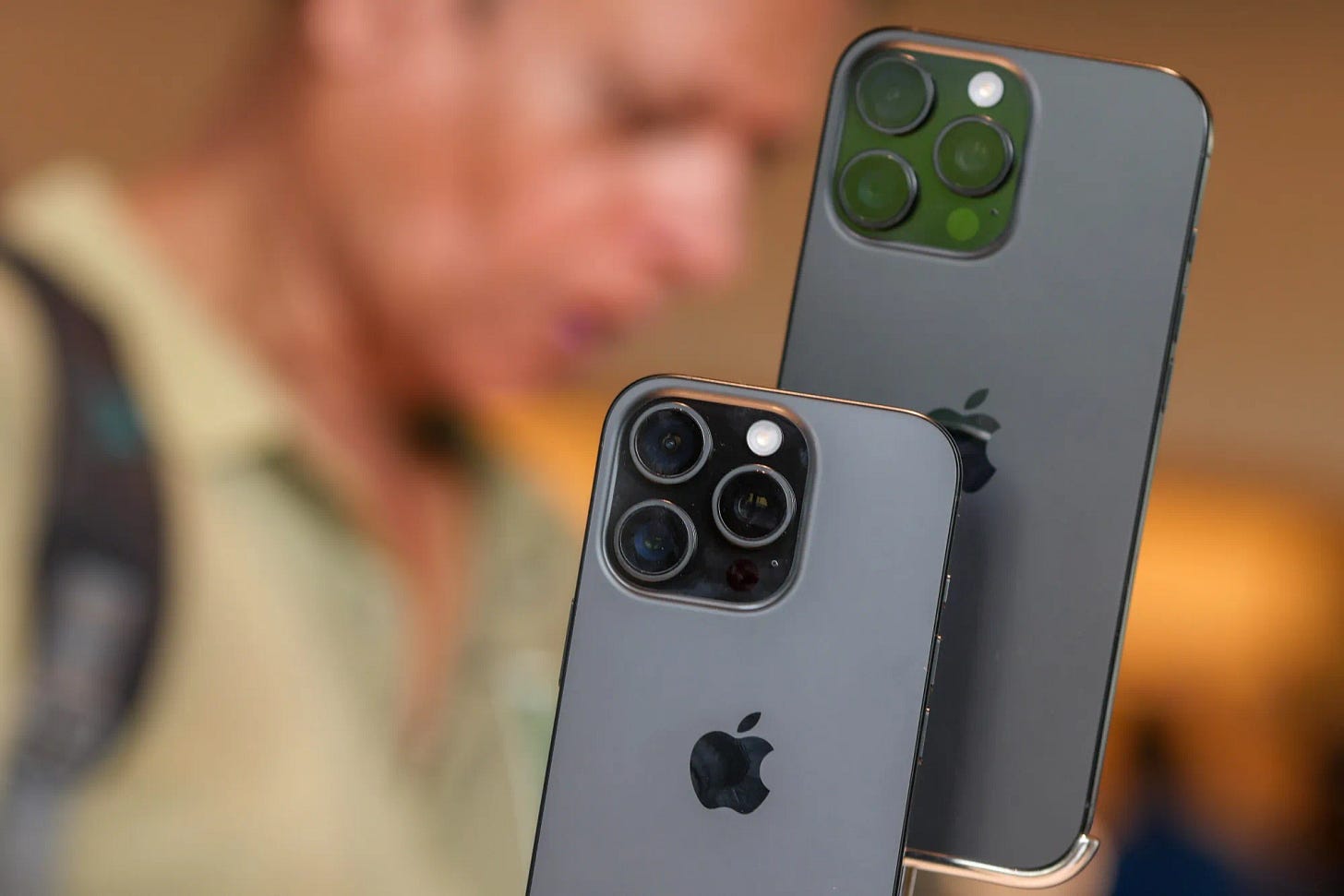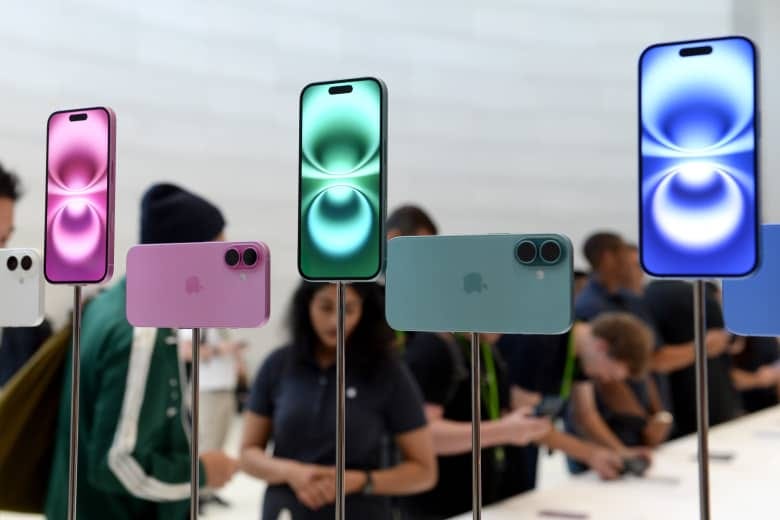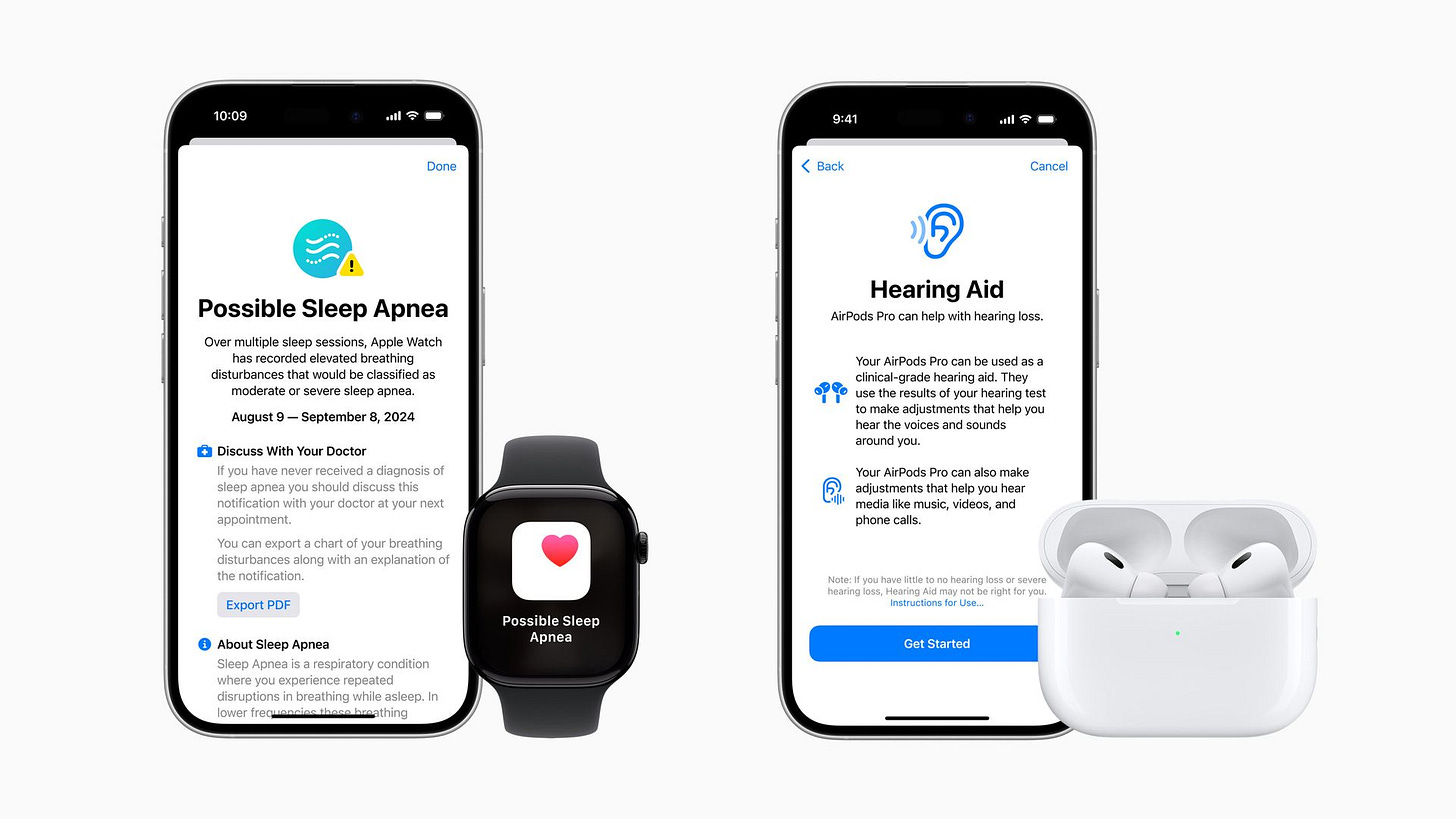AI: Apple remains misunderstood as a personal AI juggernaut. RTZ #488
...media narrative too focused on short-term 'where's the AI beef?'
Apple just launched their AI-optimized iphones, watches and airpods, and the near-term reaction by the media seems to be ‘Where’s the Beef’? (video worth playing for full effect). That plaintive, yet assertive question of course from the iconic 1984 Wendy’s burger commercial.
This time, the question seems to be ‘Where’s the Apple Intelligence’, in all its potential versions? From Axios, to the Verge, to MKBHD on YouTube, to countless other reviewers, the key question seems to be of two flavors. One as I highlighted yesterday, it’s the principled ‘we will review no software before its time’.
Since the slightly delayed Apple Intelligence features on the new iPhone 16 will be rolled out over the coming weeks and into next year, the current stance is the iPhone is ‘not a fully upgraded product’ from 2023’s iPhone 15.
Example here is the Verge Editor in chief Nilay Patel proclaiming:
““The hard rule of reviews at The Verge is that we always review what’s in the box — the thing you can buy right now. We never review products based on potential or the promise of software updates to come, even if a company is putting up billboards advertising those features, and even if people are playing with those features in developer betas right now. When Apple Intelligence ships to the public, we’ll review it, and we’ll see if it makes the iPhone 16 Pro a different kind of phone.”
The second flavor is that this year is an incremental upgrade from last year. Some like Mark Gurman of Bloomberg have even gone so far as to document the ‘slowing’ tik-tok of Apple’s annual iPhone upgrades since its Steve Job driven launch in 2007. In the provocative headline “Apple’s new iPhone 16 reflects a slowing pace of Innovation”, he proclaims:
“The new iPhone has tantalizing camera improvements, but the device is emblematic of Apple’s slower pace of hardware innovation. Also: The company is preparing a slew of updates to iOS 18 through next year; one dazzling new Apple Watch configuration remains elusive; and the latest beta version of iOS 18.1 arrives.”
“Over the 17-history of the iPhone, I count six genuinely new hardware redesigns:”
iPhone 3G (2008)
iPhone 4 (2010)
iPhone 5 (2012)
iPhone 6 (2014)
iPhone X (2017)
iPhone 12 (2020)
“By the launch of the iPhone X in 2017, Apple had moved to a three-year redesign cycle. Back then, that extra year of development made sense. The iPhone X was a gigantic upgrade, with its ground-up redesign, Face ID and other new software.”
“From there, it took Apple another three years to bring out its next big overhaul: the iPhone 12. This was the first iPhone to connect to 5G networks, and the launch took place at the height of the pandemic.”
“But after that, the redesign lag got even lengthier. Apple now appears to be working on a half-decade-long cycle. For better or for worse, the iPhone 16 has a nearly identical look and feel as the iPhone 12. Apple has added a lot other features between 2020 and 2024, but it’s undeniable that the days of frequent hardware changes are over.”
“Has this hurt Apple’s sales? It’s hard to tell.”
Of course, the financial analysts then take it from here, and try and read the tea-leaves of the iPhone 16’s upgrade cycles. The WSJ picks up the narrative in “Apple’s iPhone Supercycle May Lack Urgency”:
“An AI iPhone without AI may be a tough sell--even for Apple.”
“Apple’s shares fell nearly 3% Monday on reports indicating weak demand for its iPhone 16 family, pre-orders for which kicked off on Friday. Ming-Chi Kuo, an analyst for TF International Securities who closely monitors Apple’s supply chain, wrote in a report Monday that pre-order sales for the 16 lineup during the first weekend are down nearly 13% from last year’s iPhone 15 family.”
“In his own report Monday, Wamsi Mohan of BofA Securities noted that shipment times for overall iPhone 16 pre-orders are shorter than at the same point last year. Most notably, ship times for the iPhone 16 Pro are averaging 10 days shorter globally than for last year’s comparable iPhone model, according to BofA’s data. Kuo likewise cited lower-than-expected demand for this year’s Pro lineup as “the key factor” in the weaker pre-orders he is seeing.”
“That would be a problem for Apple, considering the key role iPhone Pro models have played in the company’s ability to grow revenue from its mature smartphone business over the last few years. Ironically, the artificial intelligence enhancements Apple is adding to this year’s iPhone family may be undercutting the case for the Pro series, as all of the iPhone 16 models this year have an enhanced processor to power on-device AI. In a report last week following the announcement of the new phones, Toni Sacconaghi of Bernstein said “the Pro vs. non-Pro value proposition arguably appears less compelling this year.”
The relative rare counter-opinion, more consistent with my thinking (no stock recommendations here), comes from Barron’s “Apple Is the World’s Most Valuable Stock. It’s Still Underestimated”:
“Six months out from iPhone releases, Apple stock has returned an average of 11.7%, eight percentage points better than the S&P 500 index.”
“All told, Apple has returned an annualized 26% over the past decade, a whopping 15 points ahead of the large-cap index.”
“All of this confirms what I’ve observed for years: Wall Street talks down new iPhones and then rushes to catch up with the reality that consumers still love them. Somehow, the market’s largest company remains one of its most underestimated.”
All three of the above pieces are worth reading in full for more detail and nuance on both sides of the Apple AI ‘hand-wringing’.
My view remains that Apple is an AI juggernaut that is just getting started. This AI Tech Wave is barely two years old since OpenAI’s ‘ChatGPT moment’ in November 2022. And Apple is slowly and carefully customizing both large and small LLM AI models, their unique ecosystem of Apple hardware operating systems, millions of developer relationships, and over two billion daily users of Apple devices, to serve safe, reliable, and truly useful AI features on a bottom up basis. With a laser-focus on user Trust and Privacy as AI Scales.
A case in point is the way they’re rolling out FDA approved AI functionality for sleep apnea and hearing assistance for tens of millions with the latest Apple software, focused on ‘Health and Fitness’. And that’s but one example across multiple industry categories.
It’s one of the reasons that LLM AI companies like OpenAI, Google and others are discussing partnerships to leverage AI together. Mostly on Apple’s terms, redefining AI as ‘Apple Intelligence’
But for all this one needs patience. This cycle is not going to follow the clean contours of annual upgrades every September. Apple is right to serve no AI software before it’s time (yes, paraphrasing another 1979 iconic commercial).
Over the next two years and more, we’re likely to find that Apple is serving the most relevant AI Beef of them all. Stay tuned.
(NOTE: The discussions here are for information purposes only, and not meant as investment advice at any time. Thanks for joining us here)










I agree and feel you will be proven true when aapl introduces ai functions on its ‘ laptops and iPads soon.